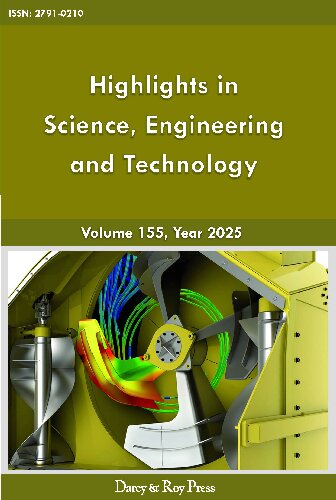Research On Olympic Medal Prediction Based on Random Forest-ARIMA Combined Model
DOI:
https://doi.org/10.54097/v494ws76Keywords:
Random Forest-ARIMA Hybrid Model, Medal Tally Prediction, Non-negative Least Squares Method,Abstract
The prediction of Olympic medals is complex due to the multi-dimensional influencing factors and the non-linear feature relationships. Therefore, a combined model capable of handling both non-linear feature relationships and capturing time series trends is required. Specifically, this study predicts the medal table for the 2028 Los Angeles Olympics based on a Random Forest-ARIMA combined model. After cleaning and integrating past data using non-negative least squares in a "property division" manner, the United States, China, and Japan are predicted to rank first, second, and third respectively, with a total of 92, 61, and 33 medals, and 37, 28, and 14 gold medals respectively. The United States, China, and Brazil are expected to continue their upward trends, while the United Kingdom will maintain a stable number of medals. Australia, Italy, and Japan have experienced greater medal fluctuations in recent Olympics and are expected to continue this trend. SAM is most likely to win its first medal, with a probability of approximately 72.3%, and three countries are expected to win their first medals.
Downloads
References
[1] Zhu M N, Peng T, Chen K. Mathematical Analysis of the Influencing Factors of the Olympic Medal Table[J]. Contemporary Sports Technology, 2017, 7(27): 239-243.
[2] Shi H M, Zhang D Y, Zhang Y H. Can Olympic medals be predicted? --An interpretable machine learning perspective[J]. Journal of Shanghai University of Physical Education and Sports, 2024, 48(04): 26-36.
[3] Wang F. Prediction of Olympic medal results in 2020 based on neural networks[J]. Statistics and Decision, 2019, 35(5): 89-91.
[4] Wang M, Pan J, Li X, et al. ARIMA and ARIMA-ERNN models for prediction of pertussis incidence in mainland China from 2004 to 2021[J]. BMC Public Health, 2022, 22(1): 1447.
[5] Schaffer A L, Dobbins T A, Pearson S. Interrupted time series analysis using autoregressive integrated moving average (ARIMA) models: a guide for evaluating large-scale health interventions[J]. BMC Med Res Methodol, 2021, 21(1): 58.
[6] Liang Y Z, Liu L, Peng L, et al. Research on Weighted Bayesian Inversion Algorithm with Non-Negative Least Squares Constraints[J]. Acta Photonica Sinica, 2020, 49(10): 216-226.
[7] Liu H. Sea surface height prediction based on the joint ICEEMDAN-ARIMA[J]. BEIJING SURVEYING AND MAPPING, 2025, 39(04): 436-442.
[8] Hoarau A, Martin A, Dubois J, et al. Evidential Random Forests[J]. Expert Systems with Applications, 2023, 230:120652.
[9] Xu Y, Li H, Lin C, et al. CellBRF: a feature selection method for single-cell clustering using cell balance and random forest[J]. Bioinformatics, 2023, 39(39 Suppl 1): i368-i376.
[10] Yu W L, Gao J, Wang R T. Internet of Things traffic classification based on lightweight random Forest algorithm[J]. Computer Engineering and Design, 2024, 45(12): 3553-3559.
[11] Csurilla G, Ferto I. How to Win the First Olympic Medal? and the Second[J]. SOCIAL SCIENCE QUARTERLY, 2024, 105:1544-1564.
Downloads
Published
Issue
Section
License
Copyright (c) 2025 Highlights in Science, Engineering and Technology

This work is licensed under a Creative Commons Attribution-NonCommercial 4.0 International License.


















